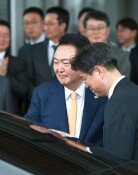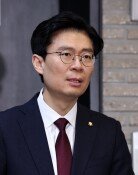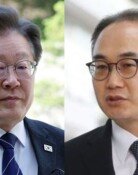History Museum Project
The project to build a modern history museum to commemorate the 60th anniversary of the Republic of Korea in 2008 is picking up speed. The Culture, Sports and Tourism Ministry added a plan yesterday to the blueprint presented last week to advance the museums opening date to February 2013. Thus, the ambitious project is back on track to imbue the people with national pride and to unify those who contributed to the countrys industrialization and democratization.
President Lee Myung-bak Friday invited members of the committee on the museums establishment to the presidential office to encourage them. We need to teach our children that the Republic of Korea wouldnt be what it is today without the sweat, tears and sacrifices of our forefathers, he said. I urge you to make the history museum of the Republic of Korea a source of pride in our history and respect for the nation by properly chronicling Koreas development. President Lee wants the museum to act as a learning ground for future generations to learn how their ancestors developed their motherland despite harsh Japanese colonial rule, national division and civil war.
According to the blueprint, the museum will vividly display the countrys transition from a Third World nation with per capita income of 67 dollars into a major economy that achieved rapid economic growth and democratization at the same time. To do so, the committee will collect some 10,000 items to display and build an archive on modern Korean history containing diverse video and audio materials. Following the original plan, the Culture Ministrys building in Sejongro, the representative street of Seoul, was selected the site for the museum.
The dispute over when the country was founded reignited in preparation work. The establishment committee insisted that 1948 be the year the republic was founded, but certain organizations and scholars opposed the idea because of the historical disconnection from the Korean government-in-exile set up in 1919 in Shanghai. The two groups finally made an uncomfortable compromise by defining 1948 as the year when the government of the Republic of Korea was established, not the country itself.
The committee must be mindful of the original purpose of the museum, which is to affirm the legitimacy and identity of Korea and display its proud history. Certain left-leaning scholars, however, have shown a negative perception on the countrys founding. The people will not tolerate an act undermining the noble sacrifices of Koreas forefathers, who established a free democracy from the ruins of the Korean War begun by communist forces and contributed to bring about present-day Korea.
The museum should boost the Korean peoples pride in their history and turn this pride into an engine for sustained national development and future prosperity. While showing national history in an objective and pragmatic manner, the museum must resist attempts to reexamine the legitimacy of the Republic of Korea.







